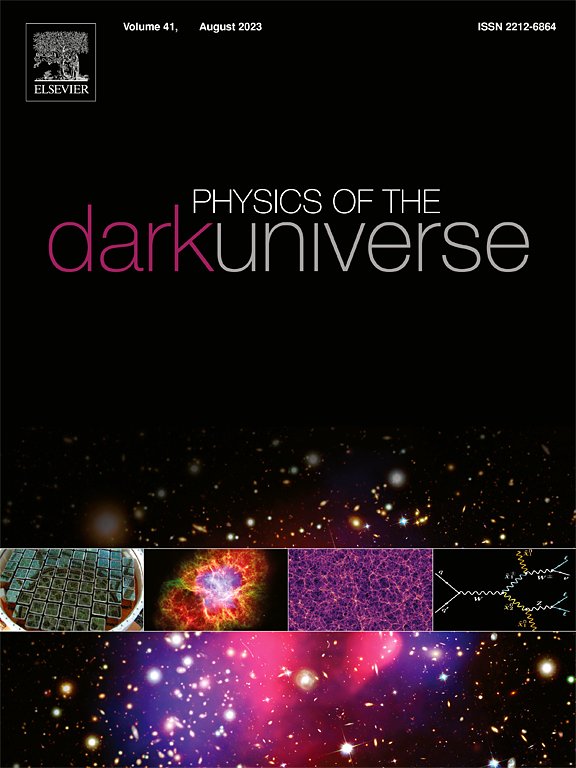用f(R,T)引力理论对Bianchi III型宇宙宇宙学参数的观测约束
IF 5
2区 物理与天体物理
Q1 ASTRONOMY & ASTROPHYSICS
引用次数: 0
摘要
Bianchi III型(BIII)度量是研究宇宙各向异性的一个有趣的各向异性模型,因为它有一个额外的指数项乘以一个方向尺度因子。因此,在修正的引力理论框架下,利用传统的能量动量张量获得BIII度规的宇宙学参数,并借助哈勃、万神庙等观测数据对其值进行估计,可能为宇宙演化提供一些新的信息。在本文中,我们研究了f(R,T)引力理论框架下的BIII度规,并利用贝叶斯技术估计了该引力理论的三种不同模型的宇宙学参数值。在我们的研究中,我们发现所有的模型都显示出与当前观测结果一致的结果,但在宇宙的早期阶段显示出偏差。在一个模型中,我们发现宇宙中以辐射为主的阶段有明显的不连续性。因此,通过这项研究,我们发现一些f(R,T)引力模型可能不适合研究BIII度量中宇宙的演化和早期阶段,即使它们显示的结果与当前的观测结果一致。本文章由计算机程序翻译,如有差异,请以英文原文为准。
Observational constraints on cosmological parameters in the Bianchi type III Universe with f(R,T) gravity theory
Bianchi type III (BIII) metric is an interesting anisotropic model for studying cosmic anisotropy as it has an additional exponential term multiplied to a directional scale factor. Thus, the cosmological parameters obtained for this BIII metric with the conventional energy–momentum tensor within the framework of a modified gravity theory and the estimation of their values with the help of Hubble, Pantheon plus and other observational data may provide some new information in cosmic evolution. In this work, we have studied the BIII metric under the framework of gravity theory and estimated the values of the cosmological parameters for three different models of this gravity theory by using the Bayesian technique. In our study, we found that all the models show consistent results with the current observations but show deviations in the early stage of the Universe. In one model we have found a sharp discontinuity in the radiation-dominated phase of the Universe. Hence through this study, we have found that some of the gravity models may not be suitable for studying evolutions and early stages of the Universe in the BIII metric even though they show consistent results with the current observations.
求助全文
通过发布文献求助,成功后即可免费获取论文全文。
去求助
来源期刊

Physics of the Dark Universe
ASTRONOMY & ASTROPHYSICS-
CiteScore
9.60
自引率
7.30%
发文量
118
审稿时长
61 days
期刊介绍:
Physics of the Dark Universe is an innovative online-only journal that offers rapid publication of peer-reviewed, original research articles considered of high scientific impact.
The journal is focused on the understanding of Dark Matter, Dark Energy, Early Universe, gravitational waves and neutrinos, covering all theoretical, experimental and phenomenological aspects.
 求助内容:
求助内容: 应助结果提醒方式:
应助结果提醒方式:


